Contents
Guide

The author and publisher have provided this e-book to you for your personal use only. You may not make this e-book publicly available in any way. Copyright infringement is against the law. If you believe the copy of this e-book you are reading infringes on the authors copyright, please notify the publisher at: us.macmillanusa.com/piracy. Contents To my Sicilian-Calabrian heritage To those people in my life who share my love of God, my Church, and the meals that I cook To my beloved Italymy earthly Paradise Acknowledgments
| 1. M Y L ORD AND MY G OD | Who loves me unconditionally. In Him I live, and breathe, and have my being. |
| 2. A LFREDO S AURINI | A young man graced with wisdom far beyond his years. He acted as my wine consultant and suggested the appropriate wines to accompany each recipe. |
| 3. |
| 4. |
| 4. J OSEPH R INALDI AND P ETER H ORAN | My publicists, who work very hard to make each of my books a success. |
Foreword by Regis Philbin There is nothing like an Italian who loves to cook, and here is an Italian priest who loves his God, his Church, his family, and the meals he cooks. No kidding, hes the real deal, and incidentally, he loves to eat, too. Maybe its the blessing he gives the food, maybe its the collection of great recipes he has saved through the years, or maybe its because he really loves to cook, but Ive been to his table and I can tell you its an extraordinary dining experience. But then Father Joe is the kind of guy you love to be with anyway. Such good conversation.
Stories you cant make up. Always with a smile. Always up. Always uplifting. I love him. He has written many cookbooks.
This one includes many rice dishes. Who knew rice had such versatility? For me over the years it was white rice or brown rice in Chinese restaurants and I drove the waiter crazy while making up my mind. Father Joe has a million little tips to offer. For example, cauliflower was never my favorite. I never ordered it. Never wanted it.
Its lower than Brussels sprouts on my vegetable taste list, but Father Joe gives us a secret about cauliflower. He agrees its bland, but if you combine it with the right ingredients, it has the ability to absorb other flavors. He has a rice recipe that actually turns the lowly cauliflower into a tempting, tantalizing, taste-pleasing vegetable. Now, if he can do that to a cauliflower, imagine what else he has for you. Its another great book from a great man, a great priest, and a great cook: Father Joe Orsini. Expert Advice Whos Afraid of the Big Bad Carb? You cant read a newspaper or magazine today that does not advocate low carbohydrates or no carbohydrates in the American diet.
As a physician specializing in internal medicine for twenty-five years, I know that the present low carbohydrate fad advocated by some dieticians and some physicians very often is full of confusion and disagreements. This fact compels me to comment about rice and pasta. In the sports community pasta and rice have been called the foods of champions. These complex carbohydrates are burned off (metabolized) by the body during sports events. Complex carbohydrates are easier to digest than other food sources such as fats and proteins. The body can concentrate more on breaking records rather than converting proteins and fats to energy.
Complex carbohydrates such as rice, pasta, whole-grain products, and certain vegetables and fruits lower the glucose response and its effects on insulin. These products keep the energy supply (glucose) moving into the cells at a more constant level with less fluctuation, resulting in less hunger. Gram for gram pasta and rice are lower in calories than proteins and fats. They also contain B vitamins, riboflavin, niacin, and iron and other nutrients. I personally prepare pasta or rice with simple sauces containing olive oil, garlic, and fresh or canned tomatoes. Depending on the amount ingested it is the sauces heavy with cream, butter, high fat cheese and pork fat that are the culprits in adding additional calories to a dish.
When I desire to lose a few pounds my main meal consists of a 5-ounce serving of pasta or rice with tomato or vegetable sauce. This, of course, must be accompanied by other calorie-restricted meals with low fat content. Vegetables, fruits, whole grains, and low-fat proteins such as fish, chicken, and beans all add to a balanced diet. Of course, if your meal consists of a half loaf of Italian bread, butter, 16 ounces of soda, pound of pasta, or rice with cream sauce, sausage, and chocolate mousse cake, you will find it very difficult to lose or maintain your weight. The Roman orator Ciceros dictum, Moderation in all things, also applies to a healthy diet and happier living. Don Simone, M.D.
Wine, Companion to Italian Cooking In the Italian culture, wine is an essential part of a meal, and, needless to say life. Throughout my travels in the wine regions of the world, I have discovered that Italy grows more grape varieties than any other country. I have suggested two wines per each risotto/rice dish. I have been a friend of Father Joe and a big fan of his recipes, and we have shared many glasses of wine with his fabulous dishes. I hope you will experience the same feelings and passion we feel when you sit at the table with friends and family. Salute, Alfredo Saurini Wine Specialist Introduction In my other cookbooks, I always included rice dishes cooked in the Italian manner.
This book is comprised totally of recipes that have rice as a fundamental ingredient. The majority of these dishes have their origin in Northern Italy because most rice grown in Italy comes from the valley of its major river, the Po. Rice is the pasta of Northern Italy. I will be presenting a number of dishes using rice, everything from soups, salads, main courses, and even a few desserts. I am sure you will be as delighted as I was to discover these many pearls of Italian cuisine that are unknown, at least outside of Italy. Rice was first introduced to European gastronomy by the Sicilians.
In the ninth century, the Arabs brought rice farming to Sicily. Unfortunately, the methods of cultivation in those times were rudimentary and the terrain produced sparse crops. Hence the price was high and rice was served only on the tables of the wealthy. In the centuries following, the situation became progressively worse and the planting of rice in Sicily was completely abandoned. However, as soon as a tourist arrives in Sicily today, his first encounter with the cuisine will be with rice croquettes called arancini. They are sold everywhere, in fry stands on the beach, in cafs, and in bars serving hot food ( tavloa calda ).
This is easy to explain. The Sicilians love of this particular dish remained, even though rice was not readily available. Be that as it may, this southern Italian concedes that Northern Italy has raised cooking rice to an art. When I was on Live! with Regis and Kathy Lee in 1992, I cooked a risotto Calabrese. I had a tough time explaining to Regis what a risotto was. We wound up shouting at each other, but in jest.
To finally clear up any misunderstanding, Regis, here is how a risotto is made: You begin by usually sauting onions in butter and olive oil. Next, add the rice and saut that, too. Then you add boiling hot broth, cup by cup, until the rice absorbs all the liquid. This takes about eighteen minutes of continual stirring with a wooden spoon. Okay. Lets go back to the beginning.


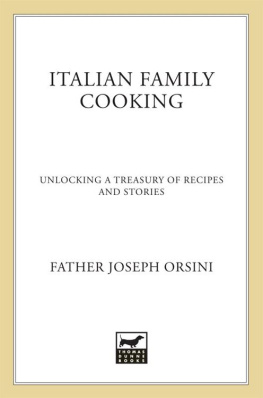
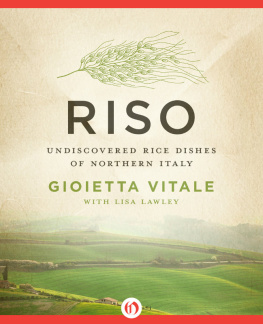
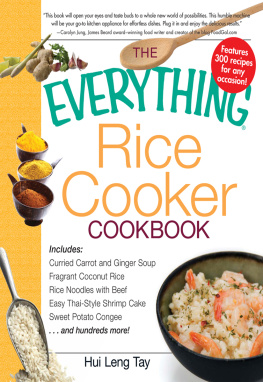

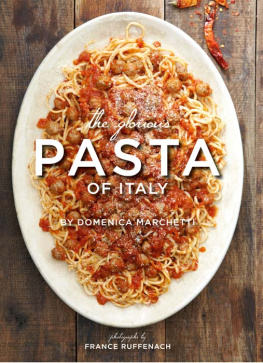
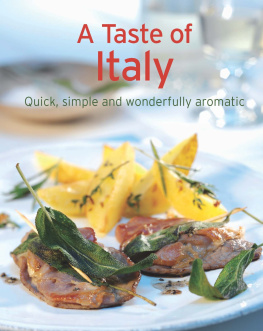

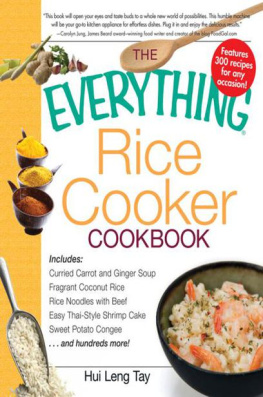
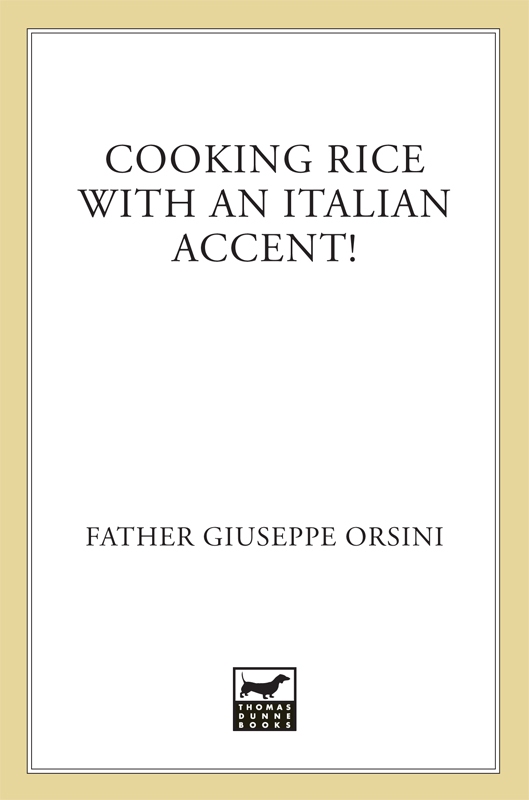
 The author and publisher have provided this e-book to you for your personal use only. You may not make this e-book publicly available in any way. Copyright infringement is against the law. If you believe the copy of this e-book you are reading infringes on the authors copyright, please notify the publisher at: us.macmillanusa.com/piracy. Contents To my Sicilian-Calabrian heritage To those people in my life who share my love of God, my Church, and the meals that I cook To my beloved Italymy earthly Paradise Acknowledgments
The author and publisher have provided this e-book to you for your personal use only. You may not make this e-book publicly available in any way. Copyright infringement is against the law. If you believe the copy of this e-book you are reading infringes on the authors copyright, please notify the publisher at: us.macmillanusa.com/piracy. Contents To my Sicilian-Calabrian heritage To those people in my life who share my love of God, my Church, and the meals that I cook To my beloved Italymy earthly Paradise Acknowledgments